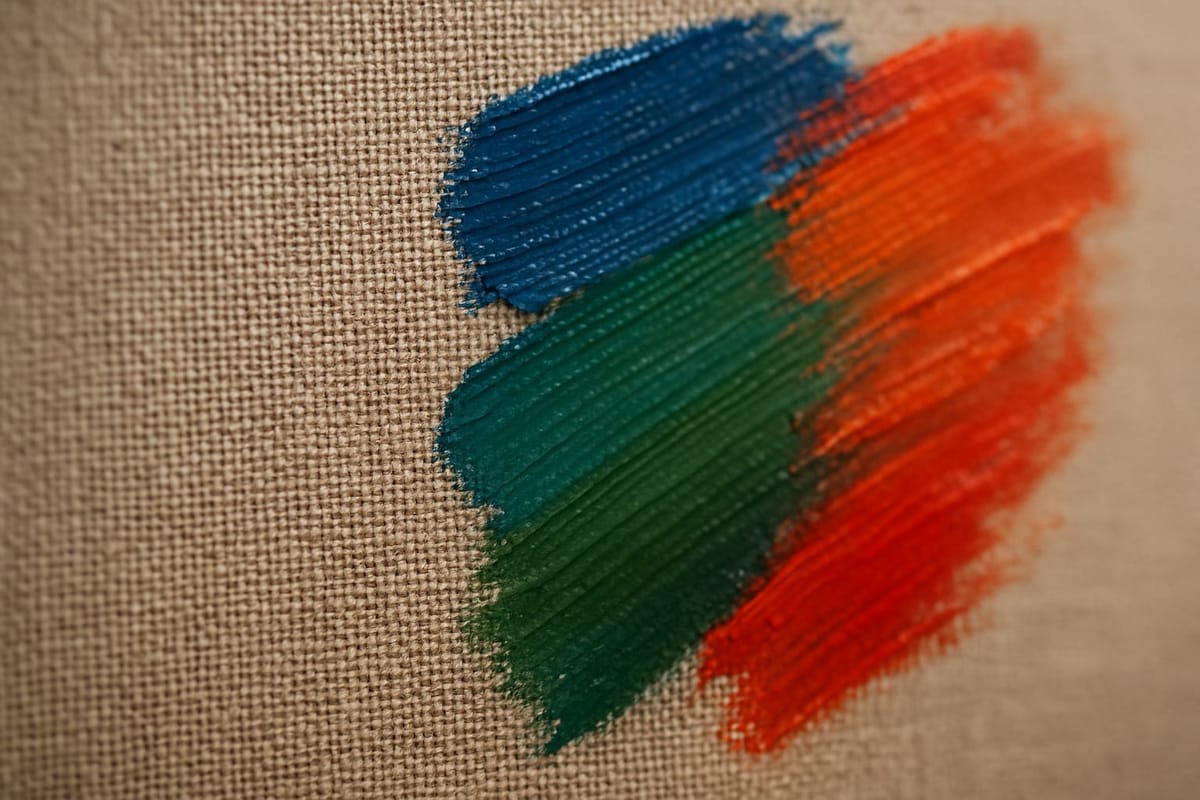Linen Canvas for Acrylic Painting: Everything You Need to Know
Choosing linen canvas for acrylic painting? See real differences in control, durability, and paint response, plus how to pick the right one today.

Acrylic painters desire a surface that seems secure, stable, and pleasant to work on. Linen is strong, textural, and easy to handle in its various techniques. This guide explores what makes linen so desirable, which linens best suit acrylic, and how to select Linen Canvas for Acrylic Painting that suits your style and future objectives.
What Makes Linen Canvas Suitable for Acrylic Painting?
Acrylic paint is applied to a linen surface, which gives it consistency and strength. Its natural fibers remain stiff even after layers, drying periods, and repeated adjustments. Many acrylic painters enjoy how linen grips the paint while still allowing smooth, controlled movements.
Linen is less responsive to humidity and temperature as compared to cotton. This stability makes your work completely flat and firm with time. With artists creating multiple layers or employing slow, deliberate techniques, the visible appearance of linen gives certainty to each stroke.
Types of Linen Canvas That Work Well With Acrylics
Choosing the right linen canvas helps you get the best results from acrylic paint. First, weave, frame depth, and depth all influence how your paint behaves. These factors also affect comfort and working speed. Understanding them makes it easier to find a Linen Canvas for Acrylic Painting that feels natural from the first layer.
By Primer
Acrylic-Primed Linen
Linen with acrylic primers provides the best platform for acrylic artists. The primer provides the right amount of absorbency, keeping the paint tight enough and preventing the brush from drying out. It makes it easier to blend, easier to control, and gives it a uniform finish. The acrylic-primed linen also provides support for thin layers as well as bold textures, which is why this method is applicable to numerous types of paintings.
Oil-Primed Linen
Linen is oil-primed and made exclusively for oil painters. Acrylic paint no longer bonds properly to oil-based grounds, which may result in peeling or uneven drying. You should avoid this surface only if you want to paint with oils. If you paint mainly with acrylics, the only safe option is acrylic-primed linen.
By Weave
Weave affects how the canvas feels under your brush and how visible the texture appears in the finished piece.
Fine Weave
Linen is a fine-weave fabric with a smooth, delicate surface. It is suitable for acrylic painting and thin layers, and soft transitions. When it comes to portraits, still life, or painstaking examinations, fine weave gives sharp edges and low variations.
Medium Weave
Medium weave is in an inelastic balance. It aids in general acrylic painting, landscapes, and works that shift between detail and looseness. Its soft texture picks up the paint without dominating the composition, hence it is a favourite among a good number of artists.
Rough Weave
Rough-weave linen has a bold texture, collecting heavy strokes of acrylic and expressive marks. Layers of heavy paint, palettes, or dramatic application will have artists preferring rough weave as it enhances the sense of movement.
By Depth
Frame depth affects presentation and durability. It also changes how your painting sits on the wall.
Standard-Depth Frames
Standard-depth linen canvases work well for those who prefer traditional framing. They sit neatly inside frames and are easy to stack or store. This depth is ideal for formal or display-focused acrylic pieces.
Gallery-Wrapped Frames
Linen gallery wrapped incorporates heavier stretcher bars. The linen will tend to cover the edges neatly, making the painting appear complete without a frame. It is a style that fits a contemporary interior and large-format acrylic paintings, which require a high visual impact.
How Acrylic Paint Behaves on Linen?
Acrylic paint responds very well to linen when the surface is primed correctly. The fibres provide strong adhesion and steady movement, enabling smooth, controlled application.
- The layers of paint are even-drying and predictable.
- Colours remain bright since the surface absorbs at a uniform frequency.
- Linen has a smoother feel when dry-brushed than cotton.
- Drizzly edges enhance finer, sharper edges with acrylic.
- Thick acrylic gels and mediums are firmly fastened to rough weave.
- Glazes remain fluid and transparent when applied in a thin layer.
This behavior makes linen a friendly and dependable surface for acrylic painters of all levels.
Benefits of Using Linen Canvas for Acrylic Painting
The benefits of working with linen include features that help acrylic painters create work that is long-lasting and expressive. These advantages are important regardless of the speed of your painting, whether thick or thin.
Better Paint Control
The linen fibres are robust and rugged. They oppose aging, brittleness, and long-term strain. The strength establishes an archival background, which safeguards the acrylic layers for several years.
Archival Stability
Linen fibers are strong and durable. They resist aging, brittleness, and long-term strain. This strength creates an archival foundation that protects acrylic layers over many years.
Less Warping and Sagging Over Time
The linen is less sensitive to humidity, temperature changes, and general wear. Linen paintings are flatter and tighter than those on cotton. This is particularly significant with large acrylic works.
Professional Surface Finish
Linen offers a natural, high-quality texture that enhances the appearance of acrylic paint. The finished work often looks more refined, which appeals to collectors and galleries.
How to Choose the Right Linen Canvas for Acrylics
A good Linen Canvas for Acrylic Painting fits your technique and personal preferences. Think about how you paint now and how you want your paintings to look in the future.
Match the Weave to Your Style
- Thin weave suits elaborate work and smooth changes.
- Medium weave is in favour of balance painting.
- Expressive acrylic techniques are complemented by rough weave for firm texture.
Choose the Correct Primer Type
Always choose acrylic-primed linen for acrylic painting. It bonds correctly with acrylics and provides the right surface feel.
Look at Linen Grade (Artist vs Professional)
Linen is artist-grade and can be used in studying and practice. Professional grade also has less rugged surfaces and more robust fibres and cleaning priming on high-value pieces. The grade selected should be dependent on the long-term purpose of each painting.
Check Stretching Quality and Frame Build
Look for tight stretching, clean corners, and strong stretcher bars. A sturdy frame keeps your linen surface flat and secure. Poor stretching can affect painting comfort and archival quality.
How to Prepare Linen Canvas for Acrylic Painting
Before painting, a few simple preparations help you get the best results from your Linen Canvas for Acrylic Painting.
- Use a dry cloth to wipe off dust on the surface.
- A thin coat of acrylic gesso can be applied if a more absorbent surface is desired.
- Allow the gesso to dry so the texture is even.
- Irritate areas discouraged by rubbing a little.
- Put the canvas on a powerful easel that keeps the movement steady.
- You will have a prepared canvas with these steps, the picture's clean layers, and the constant colour.
With these steps, your canvas will be ready for clean layers and consistent colour.
Where to Buy Linen Canvas for Acrylic Painting
Linen canvases are available from high-end art suppliers who provide reliable information on weave, primer, and frame depth. Purchasing from trustworthy retailers will help you avoid flaky stretching and low-quality priming.
Blick Art Materials
Blick offers a wide selection of linen canvases in different weaves, sizes, and grades. Their product pages show clear specifications that help you choose the right surface.
Amazon
Amazon offers numerous linen canvas options and rapid delivery, with convenient customer feedback. Such reviews allow easier comparisons of texture, priming, and overall build quality before ordering.
Conclusion
- Linen is stable, strong, and durable for acrylic painters.
- Linen is the safest and flexible one and is primed with acrylic.
- The depth of the weave, the depth of the primer, and the depth of the frame are among the elements that determine the painting experience.
- Preparation is important in order to achieve smooth layers and good adhesion.
- Shopping at reputable outlets will help you find the regular, fine linen.
Frequently Asked Questions About Linen Canvas for Acrylic Painting
Can Acrylic Paint Be Used on Oil-Primed Linen?
No. Acrylic is not safe to bond to oil-primed surfaces.
Is Linen Better Than Cotton for Acrylic Painting?
Yes. Linen is more practical, stable, and durable in the long run than acrylic work.
Should I Add Extra Gesso Before Painting on Linen?
Only if you want a different texture, acrylic-primed linen is ready to use.
Does Acrylic Paint Soak Into Linen Too Much?
Not on acrylic-primed linen. The primer controls absorption.




